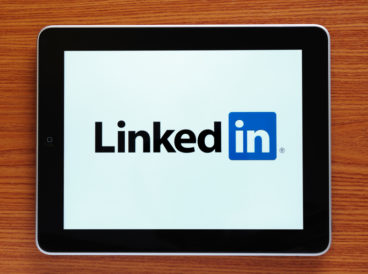Employee Engagement Must Run Deep to Thrive

December 7, 2016 – Vineet Gambhir, vice president and head of talent for Yahoo! in Asia Pacific, is a true believer in employee engagement. For the concept to succeed, however, it must be deeply woven into the fabric of a company and in turn, the mindset of its workers.
Engagement, Vineet explained when we spoke recently, is not something organizations can simply turn on when they need it most. And it involves much more than employees merely being content in their jobs.
“Employee engagement is a whole lot like gravity, which binds the employees to core values, what the company stands for, and the mission the company is on,” he says. “If the company were a house, then engaged employees would be its foundation. Even if the house were solidly built, without that foundation it would crumble. I see employee engagement through this sort of lens. People go home after work and talk about what they worked on, whom they met, and what they did. Their work experience is what drives them and how their day went is a function of the culture in the office.”
Engagement Quotient
Vineet’s insights are informed by more than two decades of international experience in human resources, HR information systems, and global operations. He has worked in the end-to-end talent-strategy field in the United States, China, India, and Singapore, where he is currently based. In the process, he has led, built, managed, and engaged diverse global teams for companies such as Cisco, HCL America, and Intel.
Vineet speaks of an employee’s “engagement quotient,” which he says can be gauged by a couple of easy self-tests, which he dubs “weekend inertia” and “vacation inertia.”
Weekend inertia refers to how one feels when the alarm clock sounds at 6 a.m. Monday morning and it’s time to get ready for work. “If it is unusually high and consistent, it typically signals you are there because you have to be not because you want to be,” he says.
Vacation inertia, for its part, refers to one’s feelings about returning to work after a vacation. “The magnitude of this signifies whether the work life has been extremely stressful, much of it dissipating during the few days of rest,” Vineet says.
“In one of my previous companies, employees earned a paid sabbatical after a certain number of years of service. Three quarters into it I decided I was feeling ‘home sick’ and joined back two weeks ahead of schedule. When an organization is getting the gravitational pull right, it is doing engagement right,” he says.
Shifting Gears
Everyone wants to be happy in their job, of course, but that’s just one aspect of employee engagement. Vineet tells of a conversation he once had with a friend, debating the merits of vehicles with automatic transmission versus manual transmission. His friend insisted that shifting gears made for a truer driving experience. He had a point, Vineet admits, and it got him thinking about how using a stick shift was not all together different from how employee engagement worked. It, too, has a number of different levels to reach, which when handled skillfully can make for a heightened organizational experience.
The “gears” as Vineet labels them are (1) I: intellectual engagement; (2) E: emotional engagement; (3) F: financial engagement; and (4) S: social engagement.
“Intellectual engagement is when the employee feels his or her opinions are valued, inputs and ideas are sought, they can innovate and challenge the status quo and are not afraid to propose a new idea even if unpopular,” he says. “Emotional engagement is when the employee is recognized for success, has the fire in the belly to see the company get ahead in the industry, and can count on the company in their time of need. Financial engagement is about the job meeting the employee’s financial goals and feeling financially rewarded for accomplishments. Finally, social engagement is about enjoying what one does and even having the family taking pride in what the employee does.”
Many companies have substantial engagement budgets and even specific roles dedicated to it, but it can still be tough to make the concept work well. Vineet believes there’s a variety of reasons for that.
The Power of Engagement
For starters, employee engagement has to be part of an organization’s core belief system, as opposed to just an initiative or a project. “When it is part of the DNA, it becomes a way of life,” he says.
Engagement must also be proactive, rather than a response to a problem. “Often we engage when the attrition is high and there is a feeling that the morale is low,” Vineet says. “Engagement should be a step ahead. Engagement should precede not succeed events.”
He stresses that employee engagement should not depend on financial performance or macroeconomics, and if it must, it should rather be inversely proportional. “Challenging times need more not less employee engagement,” Vineet says. “Engaged employees are liked skilled warriors who will win any battle they face.”
Proper engagement should encompass the entire life cycle of an employee’s experience with a company, starting with those who are soon to join and continuing far beyond after they have left the organization.
“Despite perfect engagement approaches, employees will move to another phase of their career,” Vineet says. “Engagement ensures they leave with a good feeling about their company, which is also helpful for the company’s employee value proposition and brand, and it also ensures that many of the employees would be willing to come back.”
Gut Feeling and Science
Successful employee engagement is a combination of gut feeling and science, Vineet says. Data matters, of course, but so does instinct. To make his point, Vineet uses an analogy of doctors treating a patient for a cold.
“Let’s say you have a doctor who has read all the books in the school. After he or she has studied your symptoms, he or she will say you’ve got a runny nose and give you some medicine. But you also have savvy individuals who will say, ‘You have been walking around in the rain, the weather’s been pretty cold, and you’ve been walking around with people who are sick. I’d advise you to stay warm and increase your vitamin C intake.’ Now, that’s a predictive doctor,” he says.
So it is with the human resource professional and employee engagement. Those who make the system work understand the interplay between emotions and information. “Use your instincts because that’s what makes you special as an HR person, to better understand emotions,” he says. “But also use data to validate those emotions.”
When it comes to engagement, it is important not just to collect data but also to use the data to understand themes and trends. “Data can be valuable for predictive analysis of engagement,” Vineet says. For example, if a top performer did not receive a salary increase for the last three years, such data can predict high attrition risk by time horizon and there is a chance to retain the employee before it is too late.
In the end, it comes down to an organization’s commitment to excellence across the board, and not for customers alone. “We expect great service while dining at a restaurant,” he says. “While flying, we expect great in-flight service. The four walls of an organization are no different. Employees expect great service driven by great management experience. Treating employees as internal customers, and delivering an employee experience as a service, is exactly what world-class employee engagement is all about.”
Contributed by Stephen Sawicki, Managing Editor and Scott A. Scanlon, Editor-in-Chief — Hunt Scanlon Media











